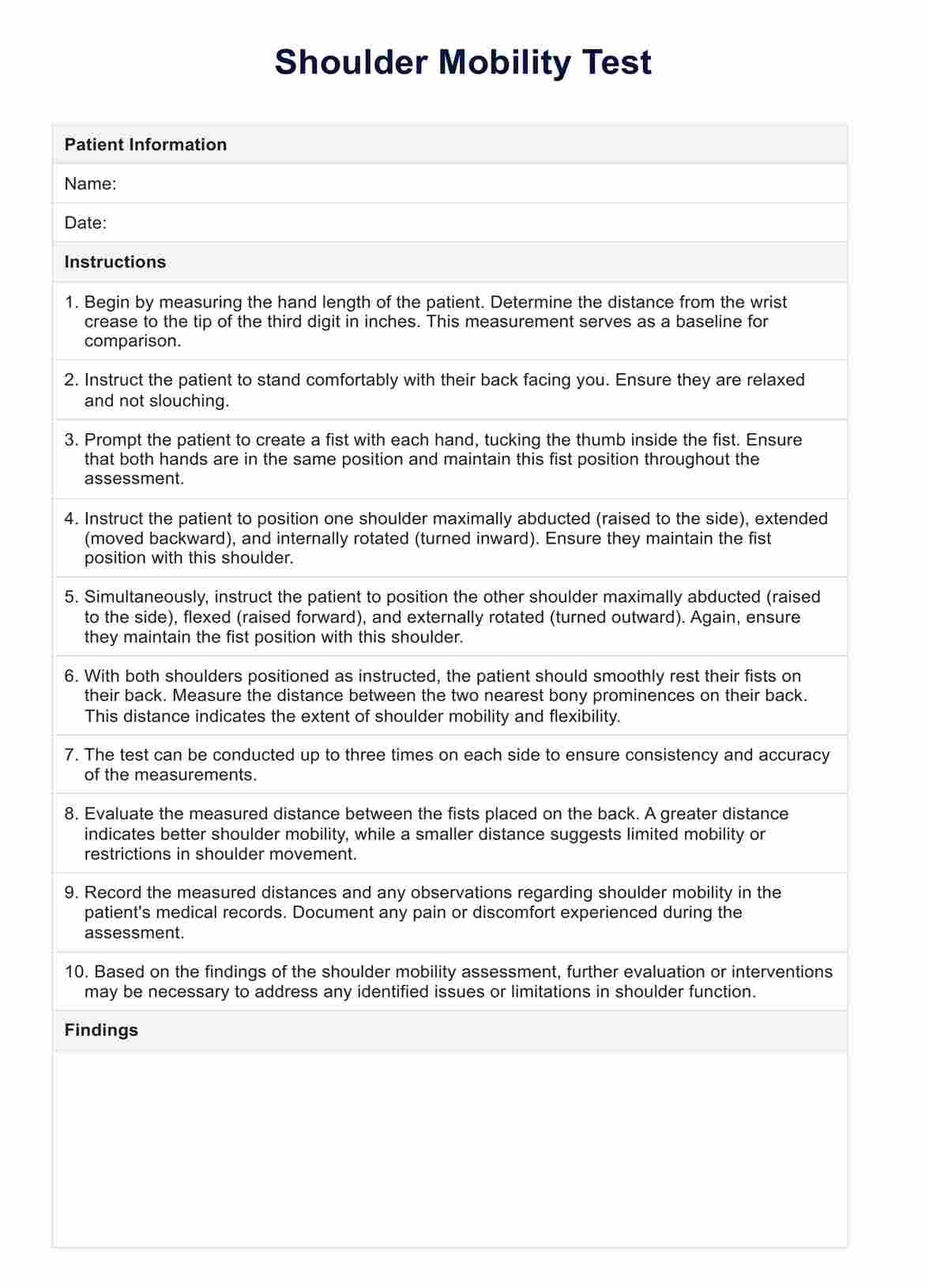To enhance shoulder mobility, particularly for internal and external rotation, it is beneficial to incorporate specific exercises that target the rotator cuff and surrounding shoulder muscles. Such exercises include internal and external rotation with resistance bands, shoulder blade squeezes, and arm circles.

Shoulder Mobility Test
Get access to a free Shoulder Mobility Test PDF. Learn how to assess your patient's shoulder mobility and streamline your clinical documentation.
Shoulder Mobility Test Template
Commonly asked questions
Yes, poor posture can directly impact shoulder mobility. Slouching or hunching forward can cause tightness in the chest muscles, leading to rounded shoulders and limited range of motion. Poor posture also affects the muscles that stabilize the shoulder blades, making them less efficient in supporting the shoulder joint. This can result in decreased shoulder mobility and increased risk of injury.
Apart from using the Shoulder Mobility Test, other signs that may indicate shoulder mobility issues include pain or discomfort in the shoulders during daily activities and sports, difficulty performing overhead movements, and a limited range of motion in the shoulders.
EHR and practice management software
Get started for free
*No credit card required
Free
$0/usd
Unlimited clients
Telehealth
1GB of storage
Client portal text
Automated billing and online payments











